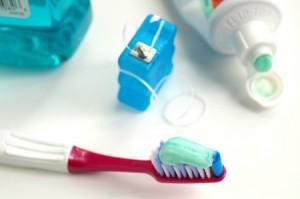The holidays bring with them extra helpings of sweets. So, it is a good time to review your child’s oral hygiene routine.
Unfortunately, tooth decay affects 50 percent of first-graders and 80 percent of 17-year-olds.
The National Institute of Dental & Craniofacial Research estimates that children will miss 52 million hours of school each year due to oral health problems and about 12.5 million days of restricted activity every year from dental symptoms.

The American Dental Hygiene Association states that a good oral hygiene routine for children includes:
- Thoroughly cleaning your infant’s gums after each feeding with a water-soaked infant cloth. This stimulates the gum tissue and removes food.
- Gently brushing your baby’s erupted teeth with a small, soft-bristled toothbrush and using a pea-sized amount of fluoridated toothpaste.
- Teaching your child at age 2 or 3 about proper brushing techniques and later teaching them brushing and gentle flossing until 7 or 8 years old.
- Regular visits with their dentist to check for cavities in the primary teeth and for possible developmental problems.
- Encouraging your child to discuss any fears they may have about oral health visits, but not mentioning words like “pain” or “hurt,” since this may instill the possibility of pain in the child’s thought process.
- Determining if the water supply that serves your home is fluoridated; if not, discussing supplement options with your dentist or hygienist.
- Asking your hygienist or dentist about sealant applications to protect your child’s teeth-chewing surfaces and about bottle tooth decay, which occurs when teeth are frequently exposed to sugared liquid

